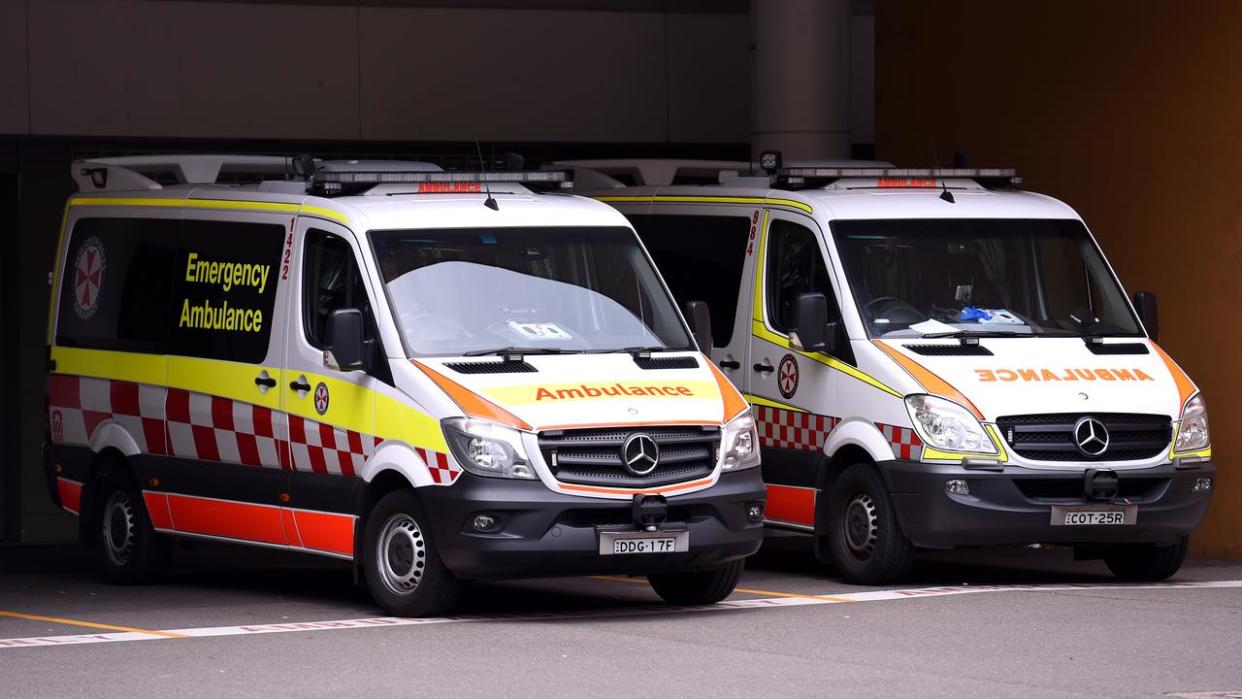Non-urgent trips draining regional ambulance paramedics

Paramedics have had to transport thousands of non-critical patients in rural NSW, potentially diverting frontline workers from emergencies and causing burnout.
NSW Ambulance made 13,627 patient transport trips in 2022/23 with the vast majority in country areas, according to the auditor-general's report into regional services released on Friday.
The reliance on ambulances to take patients to or from health facilities for non-urgent care has long been a frustration for paramedics, who say it takes them away from emergencies and leads to high-risk fatigue.
NSW Health drafted a new plan to improve patient transport in 2023, replacing another strategy that expired in 2011, the audit found.
"This means that for over a decade NSW Health has not had a cohesive statewide policy to address well-known transport needs affecting health outcomes and service delivery in regional and rural NSW," the report said.
A response from NSW Health accepted the auditor-general's recommendation to review non-emergency transport operations.
A paramedics' union told a separate ongoing inquiry the use of ambulances for transport had not improved since a rural health report condemned the practice in 2022.
"This places paramedics at risk, as non-urgent patient transports can dangerously extend shift times," the Australian Paramedics Association NSW submission said.
"Paramedics in rural and regional NSW experience this to a higher extent because (fewer) hospitals are available and the level of care available to patients is not always at the required level."
The auditor-general's report largely found the health department is effectively managing the service in rural areas, even as NSW Ambulance faces an 18 per cent increase in demand across the state since 2018.
The median response time for high priority jobs - including where a person is not breathing - was eight minutes, within the 10-minute target.
A deeper analysis showed one in 15 high priority jobs had an 18-minute response time in regional areas, the report said.
But using statewide statistics on response times could be obscuring the precise differences in city and country performance.
NSW Health accepted a recommendation to improve the way it monitors response times.
The department only accepted in principle a recommendation to improve information sharing between NSW Ambulance and local health districts as it has its own project under way.
"This project will deliver greatly enhanced access to patient information and support for clinical staff and will have a positive impact on the provision of key services to regional NSW," department secretary Susan Pearce said.
NSW AMBULANCE REGIONAL OPERATIONS:
* Ambulances took 8.65 minutes to respond to high-priority jobs in regional NSW in 2022/23, within a ten-minute target
* There has been an 18 per cent increase in demand for ambulances across NSW since 2018
* Nearly 45 per cent of NSW Ambulance operations were in regional areas in 2022/23
* There were 353,369 NSW Ambulance trips and 627,213 responses across regional areas in 2022/23
* NSW Ambulance provided 13,627 patient transport trips for non-urgent care and 80 per cent of those were in country areas
Source: NSW Auditor-General's Report into ambulance services in regional areas


